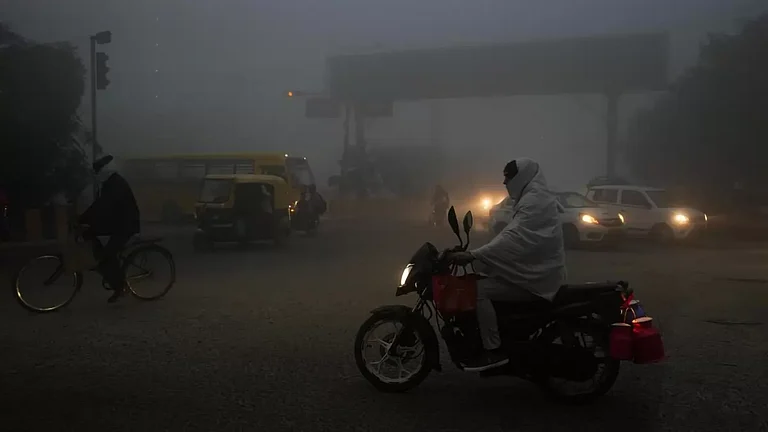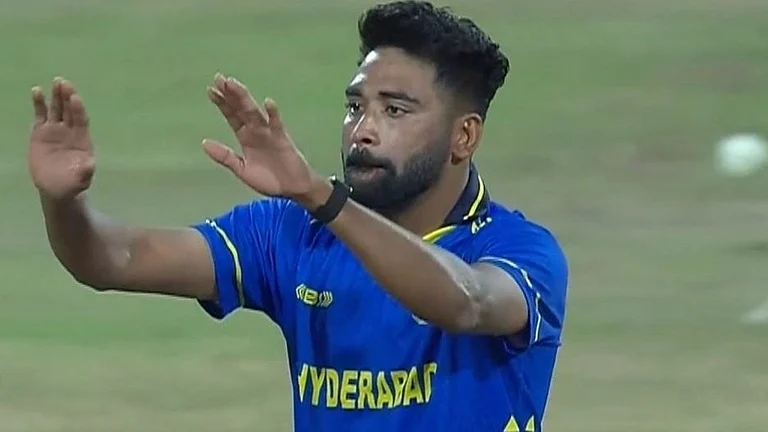BERNARD Kalb, formerly of the New York Times , now with cnn - and one of the living legends of American journalism - asked me the other day, Why are Indians so hard on themselves? Why are all the columns in your newspapers so severely critical of your country? Does everyone feel this way about India? This is something we should be asking ourselves. For if we are attuned to seeing only what's wrong with our country, we run the risk of failing to recognise the things going right, and thus forego the chance to bring them to fruition. The political changes taking place are an excellent example.
Last week I had praised the firm and deft way prime minister Vajpayee was steering the Hindu nationalist right away from the shoals of bigotry and holding his coalition together at the same time. This week I would like to direct readers' attention to the other magnetic pole of our political system, the Congress party.
Last week, party president Sonia Gandhi asked the chief minister of Orissa to step down. J.B. Patnaik did so, and by the time this appears in print, a new chief minister will have been smoothly installed in Bhubaneshwar. At first sight it might seem that Sonia Gandhi is flexing her muscles like her late mother-in-law did. Between 1971 and 1977, the elder Mrs Gandhi changed 16 chief ministers, 15 of whom were from her own party. But a closer look shows that there is a world of difference between what Indira Gandhi used to do and what Sonia did last week. The former shuffled chief ministers because she was afraid of losing control of the Congress. Nor was this fear entirely unfounded. After the ban on company donations in the '70s, she as Congress president was forced to rely on agents to collect the money the party needed to meet electoral and day-to-day expenses. As expenses mounted, the fund-raisers gained steadily in power at the expense of the elected leaders of the party. Shuffling chief ministers, pcc presidents and other party notables was Indira Gandhi's way of retaining control.
Both Sonia's reasons for asking Patnaik to step down and the way in which she has handled it could not have been more different. There were good reasons for wanting him to step down even before the killing of Graham Staines and his children three weeks ago. But Sonia refrained from asking him to do so, and preferred to let matters come to a head within the Orissa Congress on their own. It was only the state's failure to check anti-Christian violence that made her take the final step.
The message that Patnaik's ouster has sent is the opposite of the one Indira Gandhi used to send. In the '70s, Mrs Gandhi would oust effective chief ministers because their effectiveness would help them to consolidate their power base in the state. State Congress leaders therefore got the message that their power did not depend on how well they governed, but on how successful they were in pleasing Indira Gandhi in Delhi. Patnaik has been ousted because he failed to govern Orissa effectively. The message other Congress chief ministers have received is that they will receive support from Delhi so long as they govern well.
This is only the latest in a long and impressive line of moves that have put the Congress squarely on the comeback trail. Sonia shed her reluctance to enter politics in December 1997, when the Congress was days away from complete disintegration. Her entry stemmed the desertions, but what breathed new life into the party was her forthright dissociation of the Congress from some of its most serious sins of commission and omission in the past.This was exemplified by her apology to the Sikh community for the riots of 1984.
Sonia stemmed the disintegration of the Congress but was unable to stop the erosion of its share of the vote. What saved the party in March 1998 was the utter disenchantment of the voters with the parties that had made up the United Front. The collapse of their vote made it possible for the Congress to emerge with more seats despite its smaller share of the vote. This gave it the second push on the road to recovery.
The next contribution was directly Sonia Gandhi's. At almost any time in the last six months she could have brought the bjp coalition down by wooing away the aiadmk and the Trinamul Congress. But she stoutly resisted the temptation because she knew that an opportunistic alliance would make the Congress a prisoner of its allies and destroy its capacity to govern. The resulting disenchantment would abort its return to the centre of the political stage. So she refrained from destabilising the bjp government and in doing so sent another message to the nation. This was that for the Congress, power was no longer an end but merely the means to an end. The party's success in the Madhya Pradesh, Rajasthan and Delhi elections was only partly because of onions. Patnaik's ouster has reinforced this message.
The picture of Indian politics that is emerging is therefore anything but depressing. True, the executive has yet to recover fully from the collapse of its power in 1995. True, politics remains corrupt and criminalised; true, law and order and the judicial system remain in disarray. But the worst is past. The political system, which had come close to disintegrating after the end of Congress dominance in 1995-96, is stabilising rapidly once more, around two opposed poles of power, the Congress and the bjp.
The logic of politics under the simple majority voting system is forcing both to woo the floating voter. And both are increasingly aware that this can be done only through performance. Governance may still be poor, but the capacity to govern is rapidly returning. The threat of growing disorder, possibly leading to disintegration, is receding.























